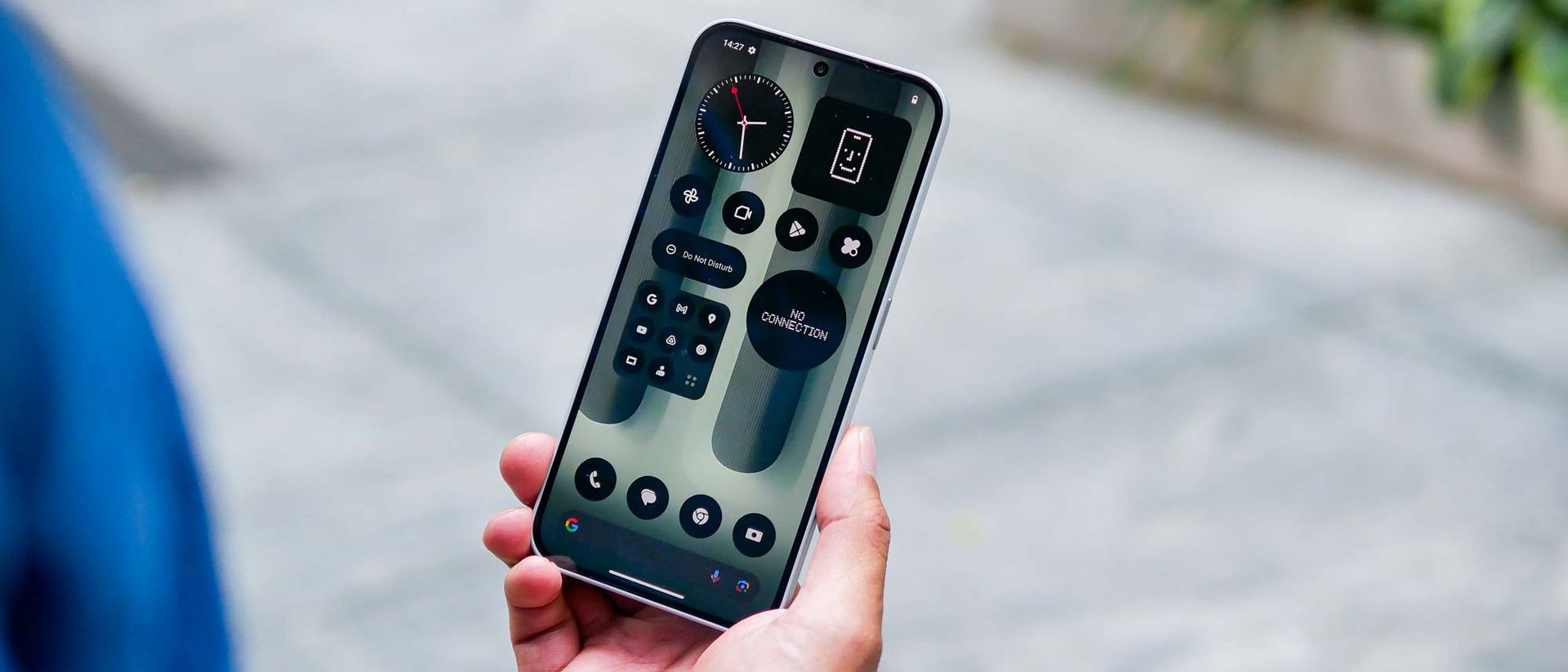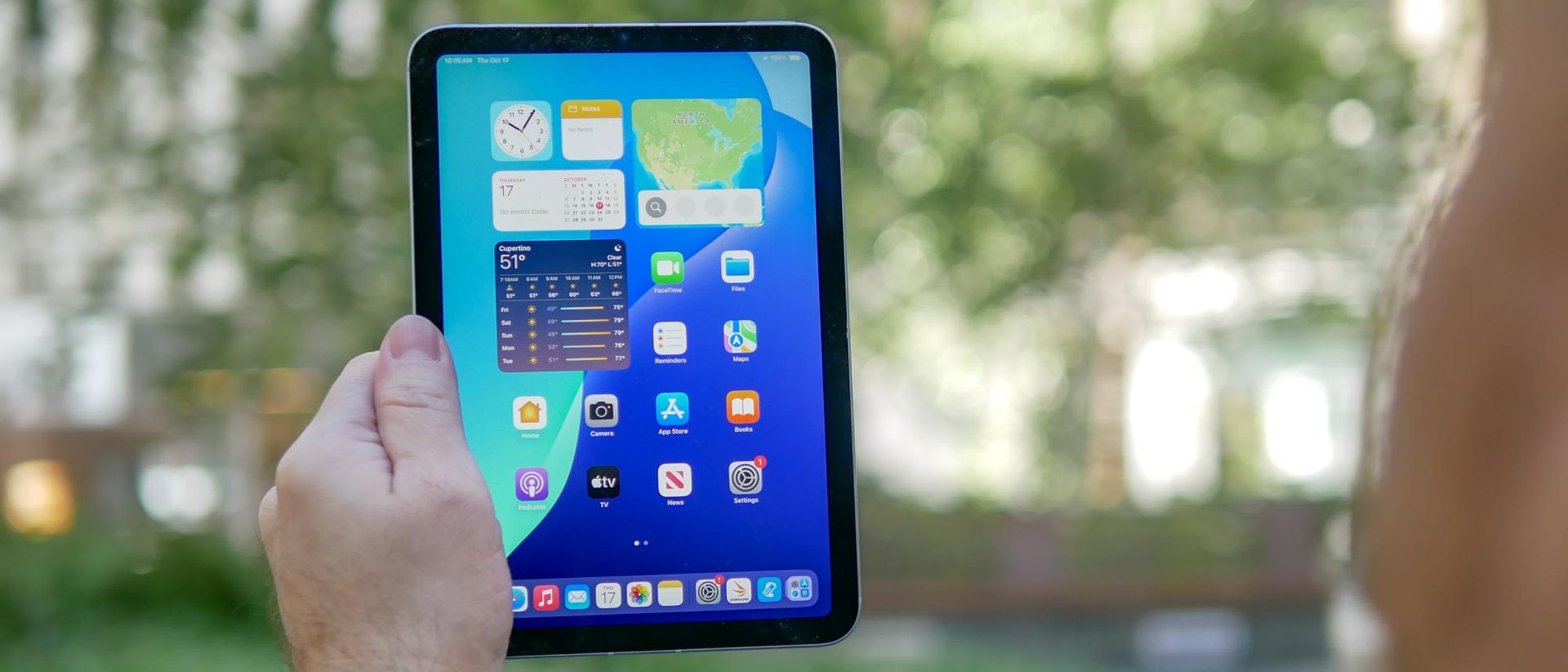Trade in iPhone 15
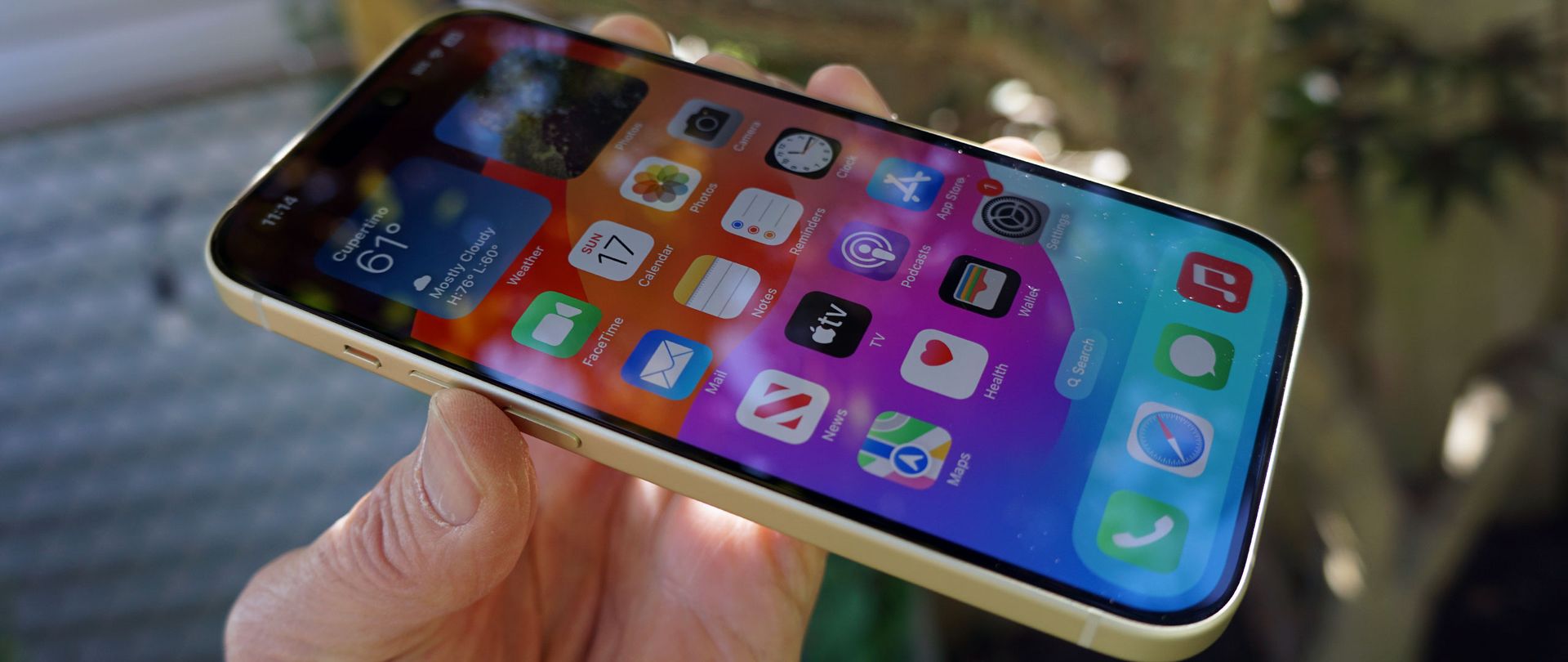
(Image credit: Future / Lance Ulanoff)
The iPhone 15 represents a modern and refined iteration of the standard iPhone, aligning it more closely with its premium counterparts. It features the A16 Bionic chipset and a 48MP main camera sensor, providing notable upgrades over its predecessor. Additionally, Apple has done away with the notch in favor of the Dynamic Island found in other iPhone 15 models and the iPhone 14 Pro and Pro Max.
The device also boasts a high-brightness screen with a peak of 2,000 nits, similar to the iPhone 15 Pro Max, making it more readable in bright sunlight. The overall design includes contoured edges for improved ergonomics and a USB-C port, as mandated by European regulators, though it doesn’t support USB 3.0 10Gbps speeds. The iPhone 15’s back glass now features a brushed, color-infused finish, enhancing its appearance and grip.
The primary camera, a 48MP sensor inherited from the iPhone 14 Pro models, captures images at a default 24MP resolution by intelligently combining data from pixel-binned 12MP images and the full 48MP data. However, the iPhone 15’s zoom capabilities are somewhat limited, offering only 2x optical zoom by cropping into the center 12MP of the 48MP sensor. While not as versatile as the zoom capabilities in the Pro models or the Samsung Galaxy S23 Ultra, the iPhone 15’s camera is still a strong performer.
We are Tradelectronics, licensed second-hand electronics dealer located in Sydney CBD, experts in trading used laptops, old cameras & lens, and used mobile phones. Fast, Reliable & We Pay More! Get a free quote on your favourite WhatsApp, Facebook, SMS & Email, instant reply!
| Click icon for WhatsApp Quote | Click icon for facebook Quote |
 |
 |
- We are open from Mon – Sat 12pm – 7pm
- Get your free quote from WhatsApp and Messenger are highly recommended, we can guide you through in finding the accurate specs for your laptops, cameras & lens, mobile phones as well. As such we can provide a more precise quote for you.
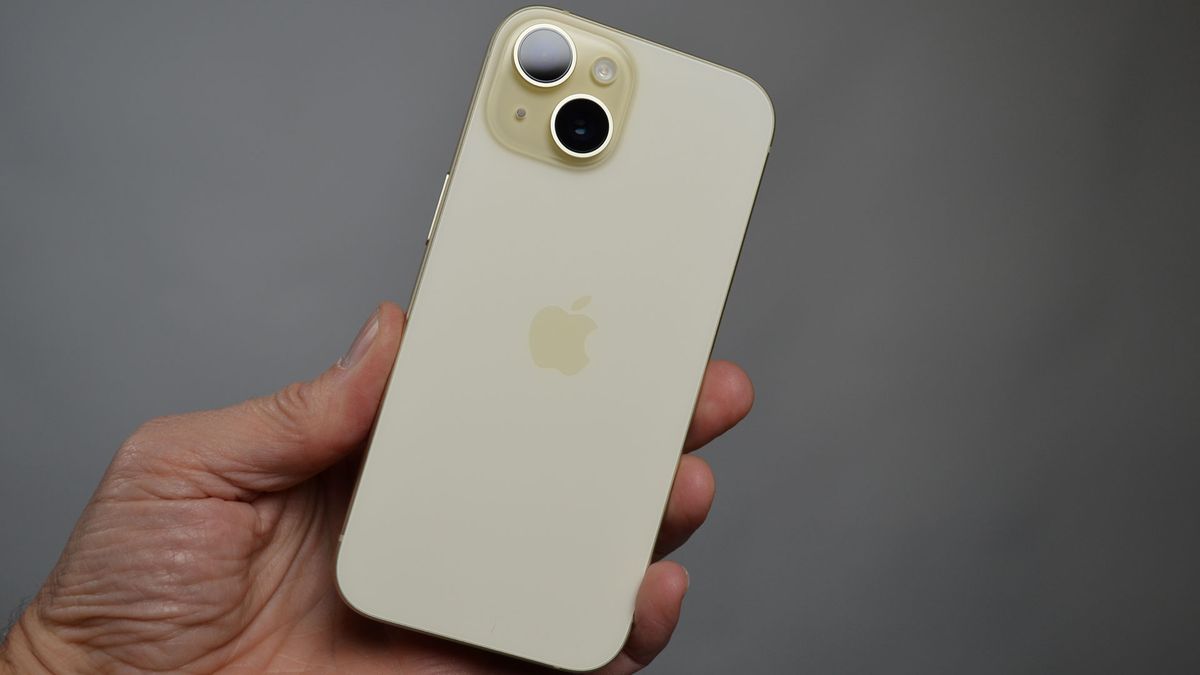
(Image credit: Future / Lance Ulanoff)
The iPhone 15 offers a compact and pocketable option in Apple’s iPhone lineup, especially now that the iPhone mini has been discontinued. With this device, you don’t have to compromise on several fronts. It features a bright, notch-free display, a capable last-generation mobile CPU, and a high-resolution camera for photography enthusiasts. If you prefer a larger phone with a similar design, you can explore the iPhone 15 Plus, or if you’re looking for more advanced features but don’t want the larger size, you can consider the iPhone 15 Pro. However, if you seek an affordable yet powerful iPhone with a smaller form factor, the iPhone 15 is an excellent choice.
IPHONE 15 REVIEW: PRICE AND AVAILABILITY
- Priced from $799 / £799 / AU$1,499
- Pre-orders live now
- On sale from September 22
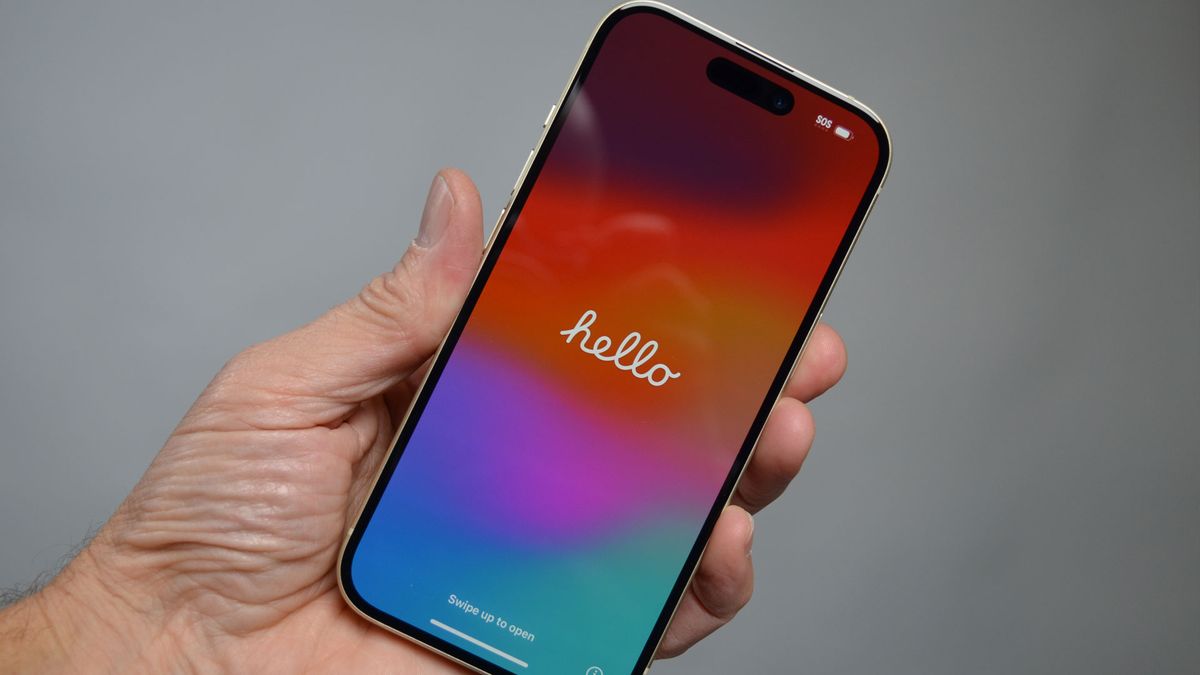
(Image credit: Future / Lance Ulanoff)
The iPhone 15 was unveiled by Apple on September 12, along with the iPhone 15 Plus, iPhone 15 Pro, and iPhone 15 Pro Max. Pre-orders for the iPhone 15 are now open, and it will be available for purchase starting on September 22.
In the United States, the price for the iPhone 15 (as well as the Plus and Pro models) remains the same as the iPhone 14, with the base model featuring 128GB of storage starting at $799.
In the UK, there’s a notable price drop for the iPhone 15 compared to the iPhone 14, starting at £799, while the iPhone 14 started at £849.
Australian pricing has seen a slight increase compared to the previous year.
| 128GB | $799 | £799 | AU$1,499 |
| 256GB | $899 | £899 | AU$1,699 |
| 512GB | $1,099 | £1,099 | AU$2,049 |
Of course, if you’re already sold on the promise of the iPhone 15, then head over to our iPhone 15 deals roundup, where we’ll be constantly updating the best offers available.
- Value score: 4.5 / 5
IPHONE 15 REVIEW: SPECS
Here’s how the iPhone 15 compares specs-wise to the rest of the iPhone 15 lineup:
| iPhone 15 | iPhone 15 Plus | iPhone 15 Pro | iPhone 15 Pro Max | |
|---|---|---|---|---|
| Dimensions: | 147.6 x 71.6 x 7.80mm | 160.9 x 77.8 x 7.80mm | 146.6 x 70.6 x 8.25mm | 159.9 x 76.7 x 8.25mm |
| Weight: | 171g | 201g | 187g | 221g |
| Display: | 6.1-inch OLED | 6.7-inch OLED | 6.1-inch OLED | 6.7-inch OLED |
| Resolution: | 2556 x 1179 pixels | 2796 x 1290 pixels | 2556 x 1179 pixels | 2796 x 1290 pixels |
| Refresh rate: | 60Hz | 60Hz | Adaptive 1-120Hz | Adaptive 1-120Hz |
| Chipset: | A16 Bionic | A16 Bionic | A17 Pro | A17 Pro |
| Rear cameras: | 48MP main, 12MP ultrawide | 48MP main, 12MP ultrawide | 48MP wide, 12MP ultra-wide, 12MP telephoto with 3x optical zoom | 48MP wide, 12MP ultra-wide, 12MP telephoto with 5x optical zoom |
| Front camera: | 12MP | 12MP | 12MP | 12MP |
| Storage: | 128GB, 256GB, 512GB | 128GB, 256GB, 512GB | 128GB, 256GB, 512GB, 1TB | 256GB, 512GB, 1TB |
IPHONE 15 REVIEW: DESIGN
- Smooth edges for a softer look and feel
- Color-infused back glass
- USB-C
- Right-sized for pockets and palms
The iPhone 15 maintains the iconic iPhone design, making it instantly recognizable. Its dimensions are very similar to the iPhone 14, measuring 146.7 x 71.6 x 7.8mm. This design continuity is a hallmark of Apple’s approach to its iPhone lineup. The dimensions are also close to those of Samsung’s Galaxy S23, which is a competing flagship smartphone.
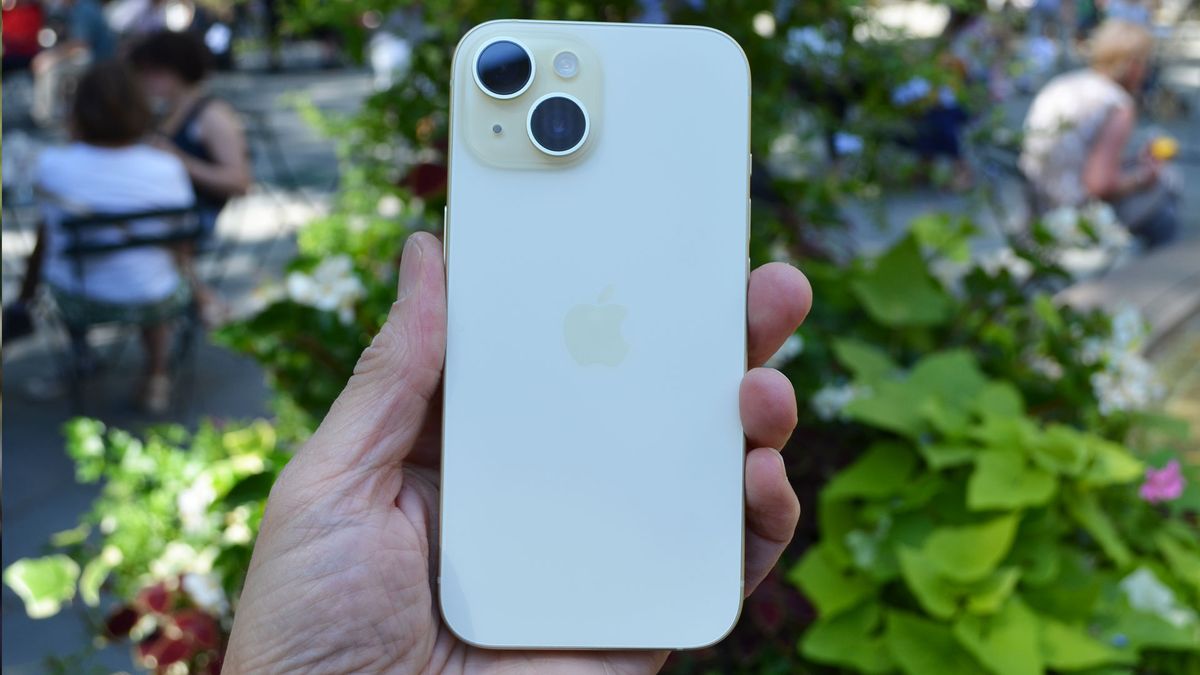
(Image credit: Future / Lance Ulanoff)
The iPhone 15 introduces several design updates that set it apart from its predecessor, the iPhone 14. These changes include a refreshed chassis design, a new glass back manufacturing process, and the implementation of the Dynamic Island, which replaces the notch with a more versatile and attractive design element.
The Dynamic Island, in combination with the contoured edges and the addition of a USB-C port, aligns the design of the iPhone 15 more closely with the other models in the new lineup.
The new color-infused glass back adds to the phone’s aesthetics and complements the contoured edges. The glass back offers a warmer look and feel compared to previous models.
The color options for the iPhone 15 are more pastel-oriented, including Yellow, Blue, Pink, Green, and Black. These colors are relatively muted, with Pink being the most vibrant among them. If you prefer bolder, more intense colors, the Pink option might be a great choice.
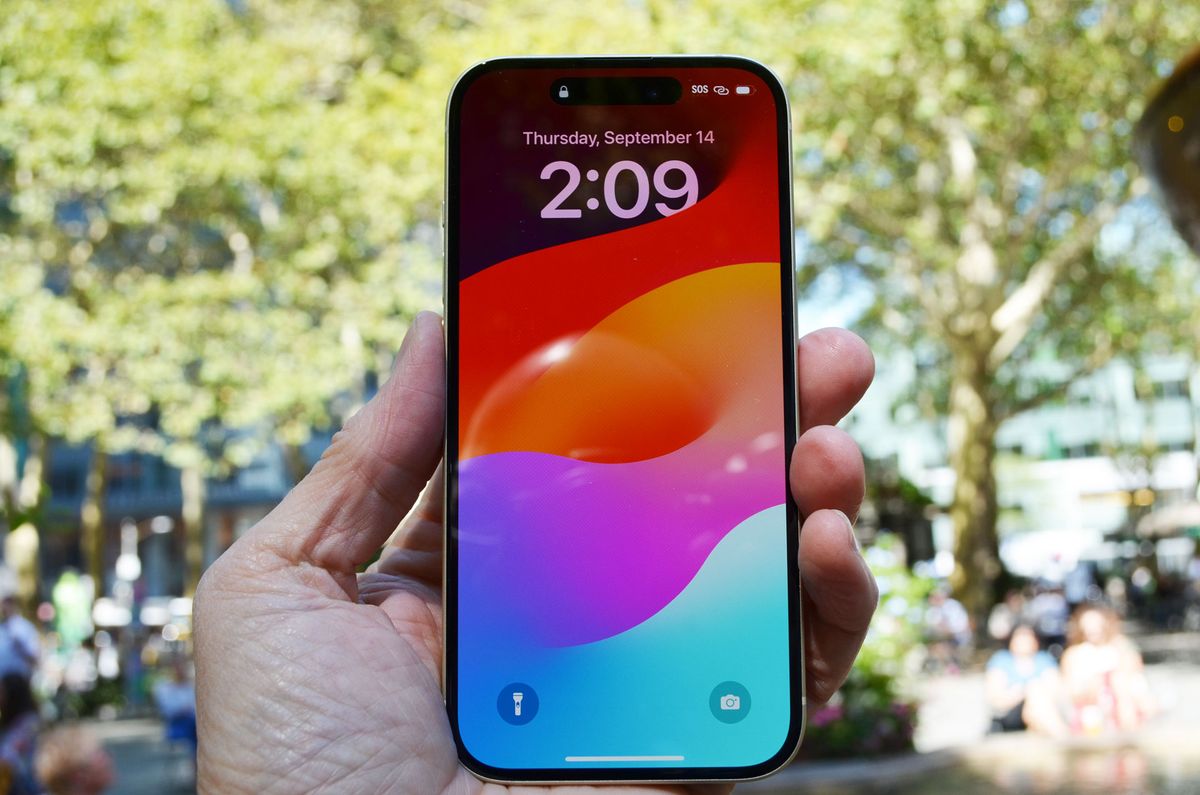
(Image credit: Future / Lance Ulanoff)
The iPhone 15 retains some of the design features from its predecessor, including the use of a ceramic shield to protect the front screen and the construction of the body from 75% recycled aluminum. The device also incorporates other recycled materials, such as recycled cobalt in the battery and recycled copper in various components, aligning with Apple’s environmental sustainability efforts.
In terms of physical design, aside from the contoured edges and the Dynamic Island screen, the iPhone 15 maintains a familiar layout. The power/sleep/Siri button remains on the right side, while the dual volume buttons are positioned on the left side. Unlike the iPhone 15 Pro and iPhone 15 Pro Max, which feature the new Action button, the iPhone 15 and iPhone 15 Plus continue to use the classic ring/silence switch. While the analog switch serves its purpose, users who encounter the Pro models with the Action button may find themselves desiring a more versatile button on their devices.
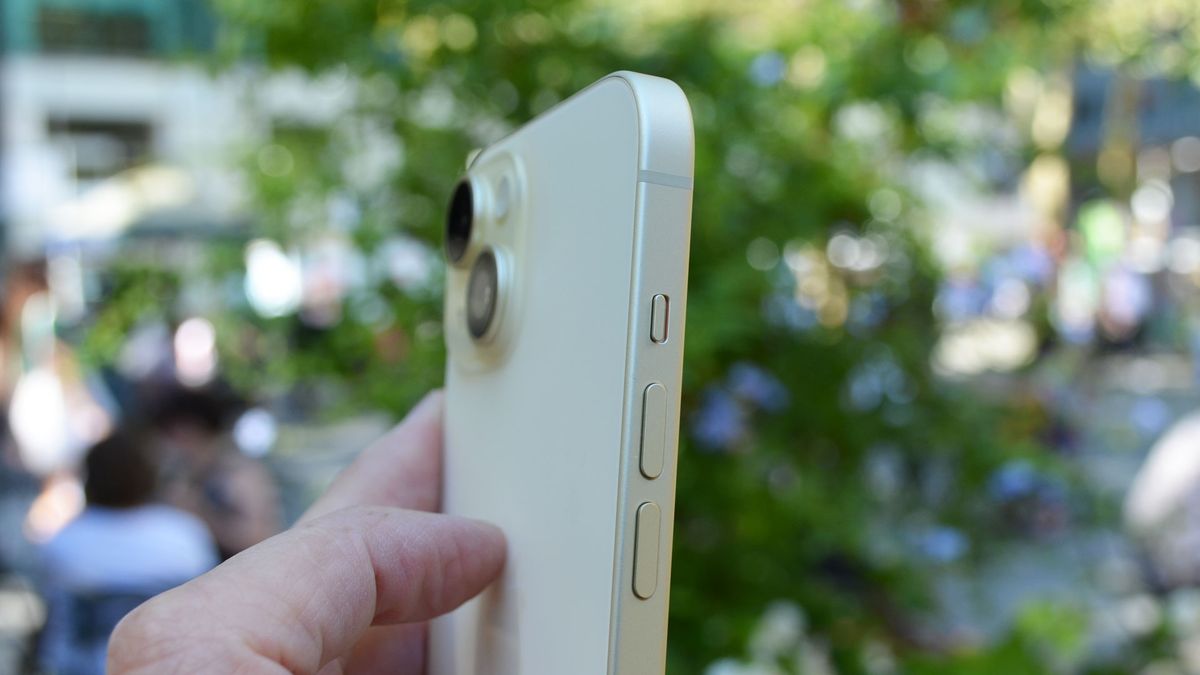
(Image credit: Future / Lance Ulanoff)
The bottom of the iPhone 15 features a familiar appearance, similar to that of the iPhone 14. However, the most significant change here is the introduction of a slightly larger USB-C port. This new port aligns with the USB-C port featured on all iPhone 15 models, although it’s worth noting that the iPhone 15 and iPhone 15 Plus won’t support high-speed USB 3 connections. This change means that your older Lightning cables won’t be compatible with this port, but Apple does provide a USB-C-to-USB-C cable in the box.
Overall, the iPhone 15’s design represents an upgrade, even though it doesn’t constitute a complete overhaul. The refresh improves the phone’s appearance and tactile experience compared to its predecessor.
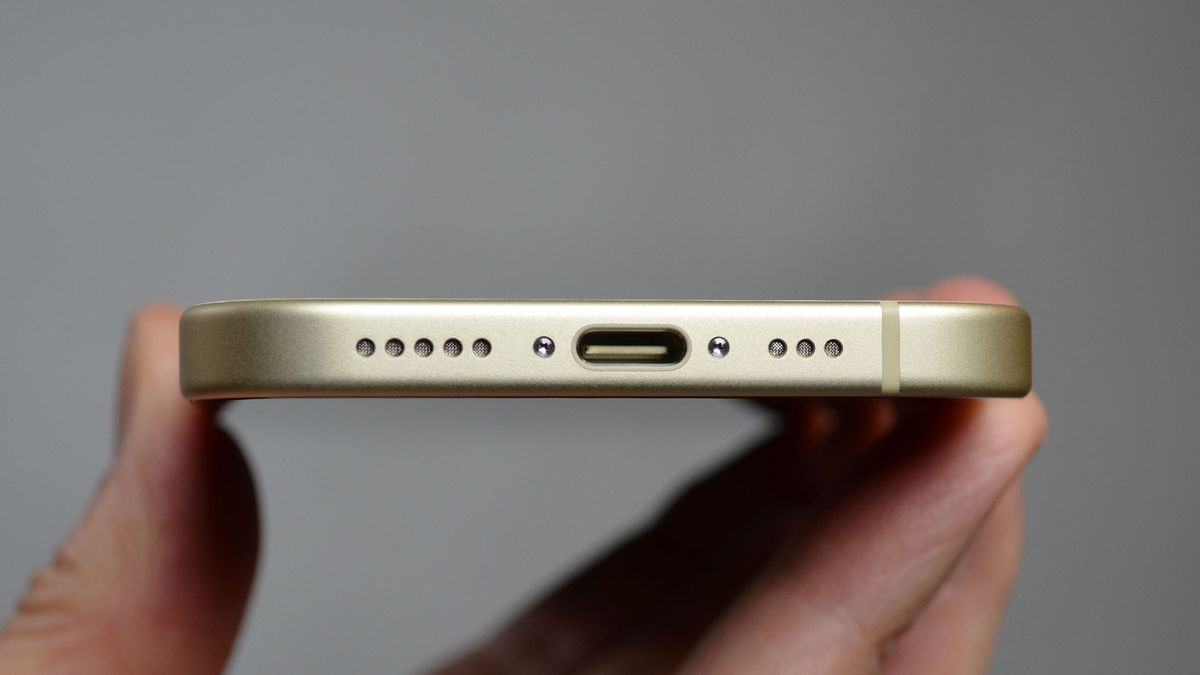
(Image credit: Future / Lance Ulanoff)
- Design score: 4 / 5
IPHONE 15 REVIEW: DISPLAY
- Upgraded Super Retina XDR
- No change to the resolution, refresh rate or screen size
- Goodbye notch
- Still no ProMotion
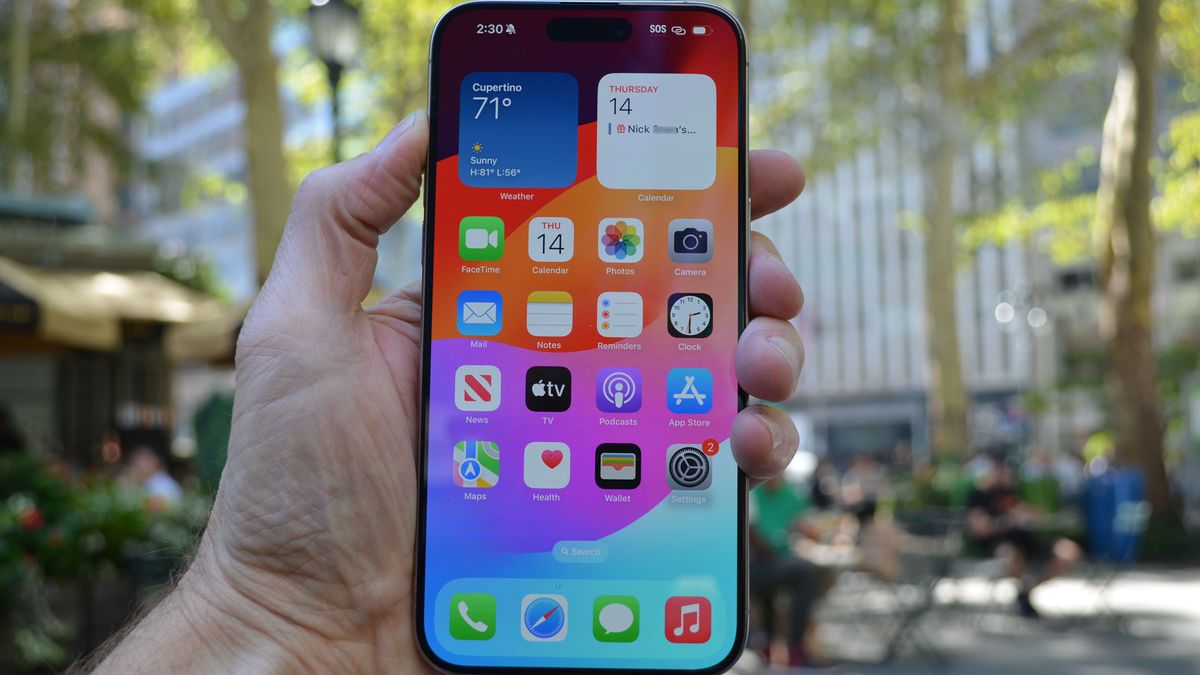
(Image credit: Future / Lance Ulanoff)
The iPhone 15 didn’t undergo changes in screen resolution compared to the iPhone 14. However, Apple made minor adjustments by reducing the size of the black bezel around the screen. As a result, it gained a few extra pixels, and the display now features a resolution of 2556 x 1179, maintaining a pixel density of 460ppi. Despite the same pixel density, the display is slightly larger than the iPhone 14’s 2532 x 1170 screen.
What sets the display of the iPhone 15 apart is the inclusion of the Dynamic Island, which provides information about various aspects such as upcoming Uber rides, directions, and currently playing music. A simple tap on the Dynamic Island grants access to even more detailed information. This feature is consistent with what iPhone 14 Pro and Pro Max users have enjoyed, and it’s now integrated into the iPhone 15 and iPhone 15 Plus.
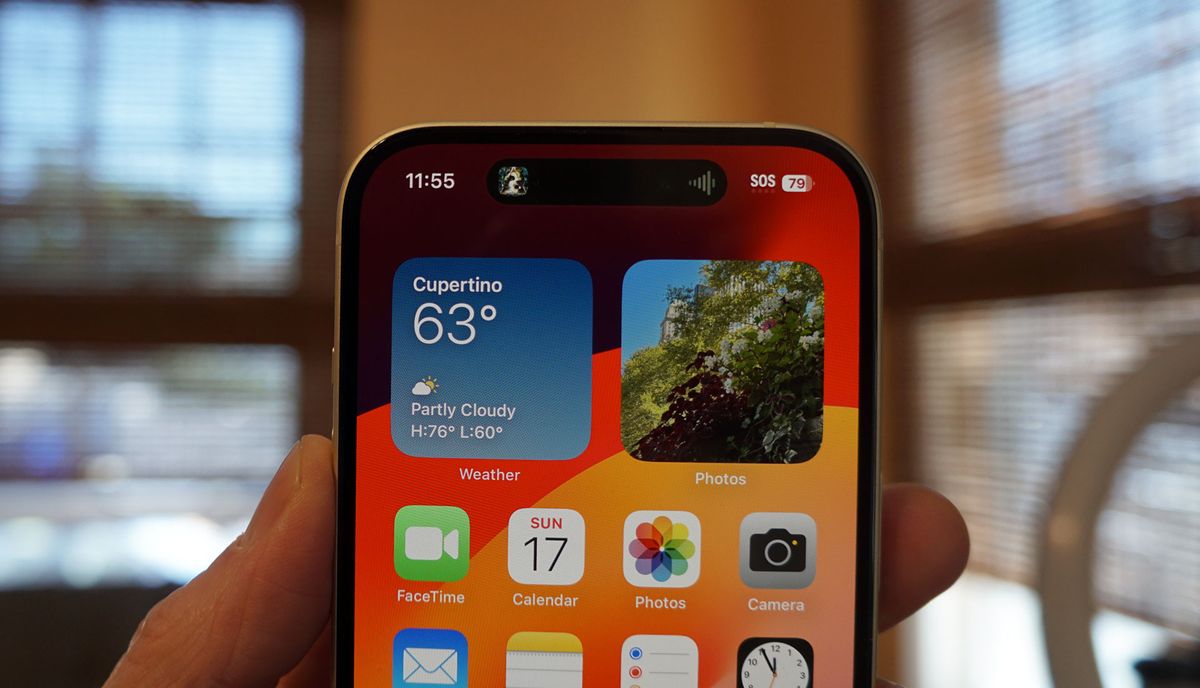
(Image credit: Future / Lance Ulanoff)
The iPhone 15 has undergone a significant upgrade in terms of brightness. Its screen now boasts a maximum brightness of 2,000 nits, and in testing, it is noticeably brighter than the iPhone 14. Like other Super Retina XDR OLED displays from Apple, the iPhone 15’s 6.1-inch screen supports a wide color gamut and offers a contrast ratio of 2,000,000:1, resulting in deep blacks and vibrant colors. Overall, the display delivers excellent visual quality.
However, it’s worth noting that the iPhone 15 does not support ProMotion, which means its refresh rate is fixed at 60Hz, and it lacks support for an Always-On display. While iOS 17 introduces the new StandBy mode for the iPhone 15, which functions when docked on a MagSafe wireless charger in landscape orientation, the display will either be fully on or off.
It’s important to recognize that the absence of ProMotion in the iPhone 15 shouldn’t be seen as a disadvantage. This model is positioned at a price point starting at $799, and Apple reserves some flagship features for higher-priced models. ProMotion, with its variable refresh rate down to 1Hz, is considered a Pro-level feature in Apple’s product hierarchy. Some competitors, like the Samsung Galaxy S23, offer variable refresh rates ranging from 48Hz to 120Hz. Overall, the iPhone 15 offers an excellent display with ample capabilities and features that should satisfy the needs of most users.
- Display score: 4 / 5
IPHONE 15 REVIEW: CAMERAS
- New 48MP camera
- Excellent portrait features
- 2x “zoom”
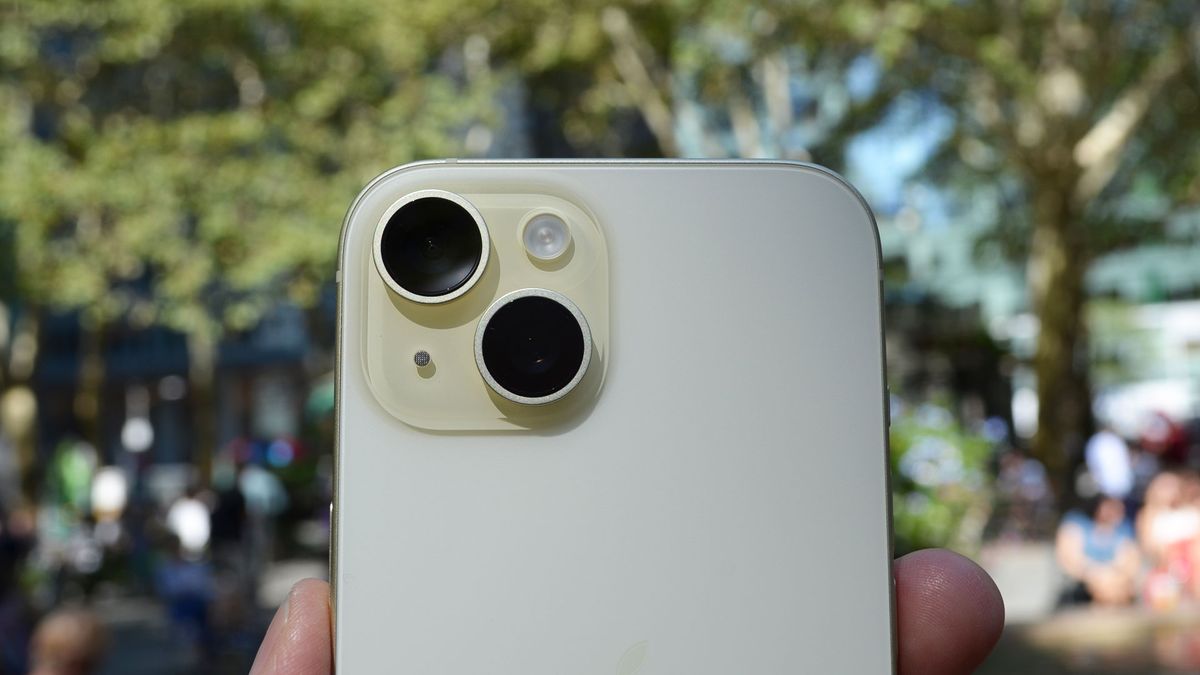
(Image credit: Future / Lance Ulanoff)
The iPhone 15 retains its dual-camera system on the back, but it has received some noteworthy changes. While the 12MP ultrawide camera remains largely the same, the primary camera has received a significant upgrade. The main camera now features a 48MP sensor, similar to the one found in the iPhone 14 Pro. However, it’s important to note that this 48MP sensor is not the same as the larger sensor used in the iPhone 15 Pro and Pro Max.
This enhancement is a notable improvement over the 12MP main camera in the iPhone 14. Furthermore, all the cameras in the iPhone 15 benefit from the A16 Bionic chip and improved image processing technologies, including a photonic engine and computational photography, which introduce a range of new photography features.
Apple has also introduced millimeter distinctions to describe the various camera magnifications, providing users with a better understanding of the field of view and magnification. For example, the ultrawide camera is akin to a 13mm lens, while the 2x zoom is equivalent to a 52mm lens. These distinctions help users better comprehend the camera’s capabilities.
First, though, all the cameras on the iPhone 15:
- Main: 48MP f/1.6
- Ultrawide: 12MP f/2.4
- Front-facing TrueDepth: 12MP f/1.9
The iPhone 15 introduces a clever approach to optical zoom by incorporating 2x optical zoom within the 48MP main camera lens. Essentially, the iPhone 15 uses the middle 12 pixels of the full-frame sensor to create an optically zoomed image. This feature allows users to get closer to the subject without physically moving closer. What makes it appealing is that the resulting 12MP images maintain optical quality, meaning you’ll get sharp and clear zoomed-in shots.
However, if you desire more optical zoom in a smartphone priced at $799, you may want to consider the Samsung Galaxy S23, which boasts a dedicated 3x optical zoom camera with a 10MP sensor.
Additionally, all photos captured with the iPhone 15’s main camera are now 24MP by default. Apple’s new photo processing method combines binned 12MP images (created by grouping four pixels from the 48MP sensor) with the full-frame 48MP image. This results in images that outperform those taken with the iPhone 14. In comparisons with photos from a Samsung Galaxy S23, the iPhone 15 consistently produced more accurate and true-to-life representations of the surroundings, whereas Samsung’s photos tended to have overly vivid colors with exceptionally bright flowers and intensely blue skies.

(Image credit: Future / Lance Ulanoff)
Portrait photography has seen a significant improvement across the iPhone 15 series. Now, any photo taken with the main camera can potentially become a portrait image, provided the iPhone detects a person or a pet in the shot and collects depth information, which it does quite consistently in practice.
This means that you can take a photo and convert it into portrait mode later. Photos that can be edited into portrait mode feature a small “Portrait f” symbol. Tapping this symbol allows you to transform the photo into portrait mode. You can also make further adjustments, including modifying the depth of field and selecting the focus point with a simple tap on the subject or object.
When it comes to video quality, the iPhone 15 offers excellent performance, supporting shooting up to 4K at 60 fps. Cinematic mode is a notable feature, allowing you to add a cinematic focus effect to your videos and choose the focus subject or object while shooting. You can also edit the video afterward to change the focus point.
Low-light photography is impressive, and the 12MP TrueDepth front camera serves as an excellent selfie camera. Moreover, you can easily convert most selfies into portrait mode with a tap.
Overall, the iPhone 15 delivers the best set of cameras ever seen in a standard iPhone model. While they may not match the capabilities of the iPhone 15 Pro Max, with its stronger telephoto and macro features, these cameras are more than sufficient for a non-“Pro” iPhone, offering remarkable versatility for your photography needs.
- Camera score: 4 / 5
IPHONE 15 REVIEW: CAMERA SAMPLES

(Image credit: Future / Lance Ulanoff)
IPHONE 15 REVIEW: PERFORMANCE AND SPECS
- A16 Bionic
- Is 128GB enough storage?
The Apple iPhone 15 comes equipped with the A16 Bionic, which is based on last year’s best mobile CPU and offers significant processing power. This CPU features a 6-core CPU, 5-core GPU, and a 16-core Neural engine, supported by 6GB of RAM. While it may not be as powerful or as fast as the new A17 Pro found in the iPhone 15 Pro and iPhone 15 Pro Max, it delivers more than ample performance for the majority of iPhone users.
It’s worth noting that while you would prefer the iPhone 15 to start with 256GB of storage, it’s an improvement from the days when the base model came with just 64GB.
In your Geekbench 6 tests, the A16 Bionic in the iPhone 15 demonstrates performance on par with that of the iPhone 14 Pro. Additionally, it outperforms Qualcomm’s Snapdragon 8 Gen 2, which is found in the Samsung Galaxy S23.
Ultimately, real-world performance is more significant than benchmark numbers. The iPhone 15 is capable of handling a wide range of tasks, from streaming videos and web browsing to 4K video editing and playing action games. It can confidently manage whatever you throw at it.
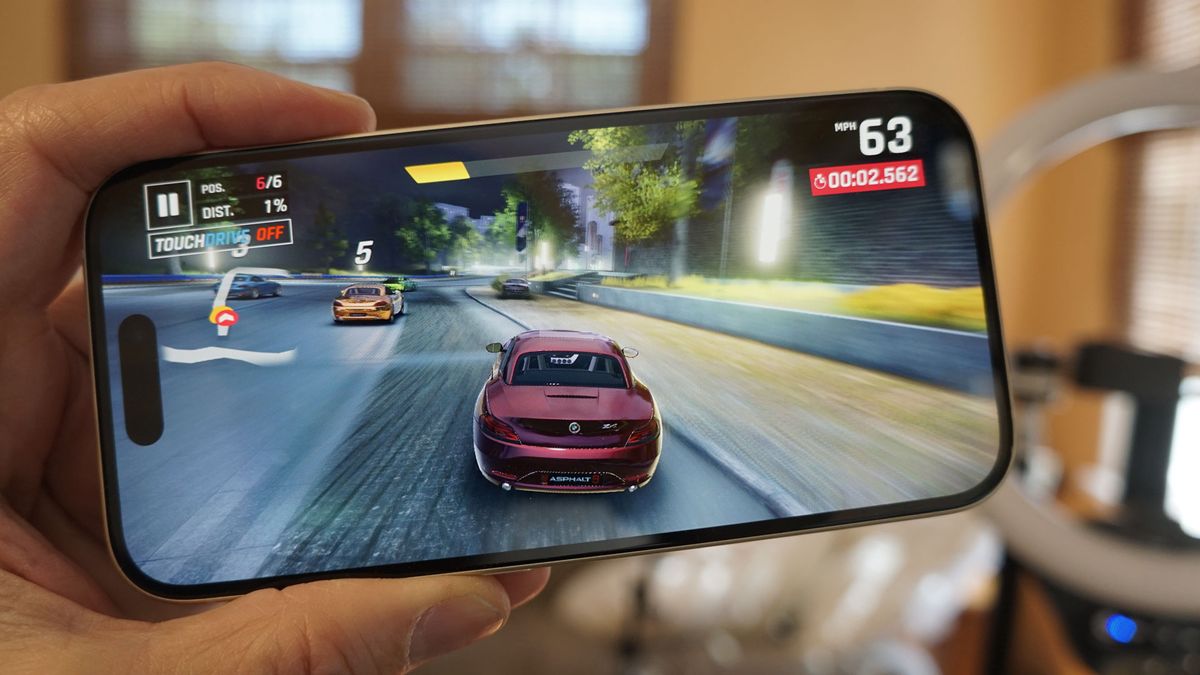
(Image credit: Future / Lance Ulanoff)
It’s great to hear that Asphalt 9: Legends ran smoothly on the iPhone 15. The observation of the back of the iPhone 15 getting warm during extended gameplay could indeed be due to the aluminum body, which might transfer heat more readily compared to the stainless steel body of the iPhone 14 Pro. This change in material can influence the way the device dissipates heat.
Despite the warming issue during gaming, it’s clear that iPhone 15 owners will have little to complain about in terms of overall performance. The A16 Bionic chipset, while not the latest and greatest from Apple, remains a powerful and capable processor that can handle a wide range of tasks and applications with ease.
- Performance score: 4 / 5
IPHONE 15 REVIEW: SOFTWARE
- iOS 17 on board
- Contact posters
- Lots of small and useful changes
iOS 17 seems to bring a mix of subtle and more noticeable improvements to the iPhone 15. The redesigned iMessage menu and gesture-based emoji control in FaceTime offer a smoother user experience. Features like Contact Posters and Name Drop enhance the ease of sharing contact information, while the AirDrop “Bring Devices Together” feature aims to streamline device connections, although users should be cautious and understand its functioning before leaving it on.
The Standby feature, even without an always-on display, is a handy addition for those who like to keep useful information on the screen while charging. Overall, these enhancements should make the user experience more convenient and enjoyable.
- Software score: 4 / 5
IPHONE 15 REVIEW: BATTERY LIFE
- All-day battery
- USB-C
- Bring your own power adapter
While Apple doesn’t typically disclose the exact battery size of their devices, it seems that the iPhone 15’s battery specifications are similar to its predecessors. Apple’s claimed 20 hours of video playback, 80 hours of audio playback, and the ability to reach a 50% charge in 30 minutes with the optional 20W charger suggest a familiar battery capacity.
Based on your tests, it appears that the iPhone 15 offers a full day of battery life with around 15 hours of mixed use. This aligns with the expectations for typical daily usage. Fast charging is efficient, as advertised, but faster wired charging would be a welcome improvement for users who need a quick power top-up.
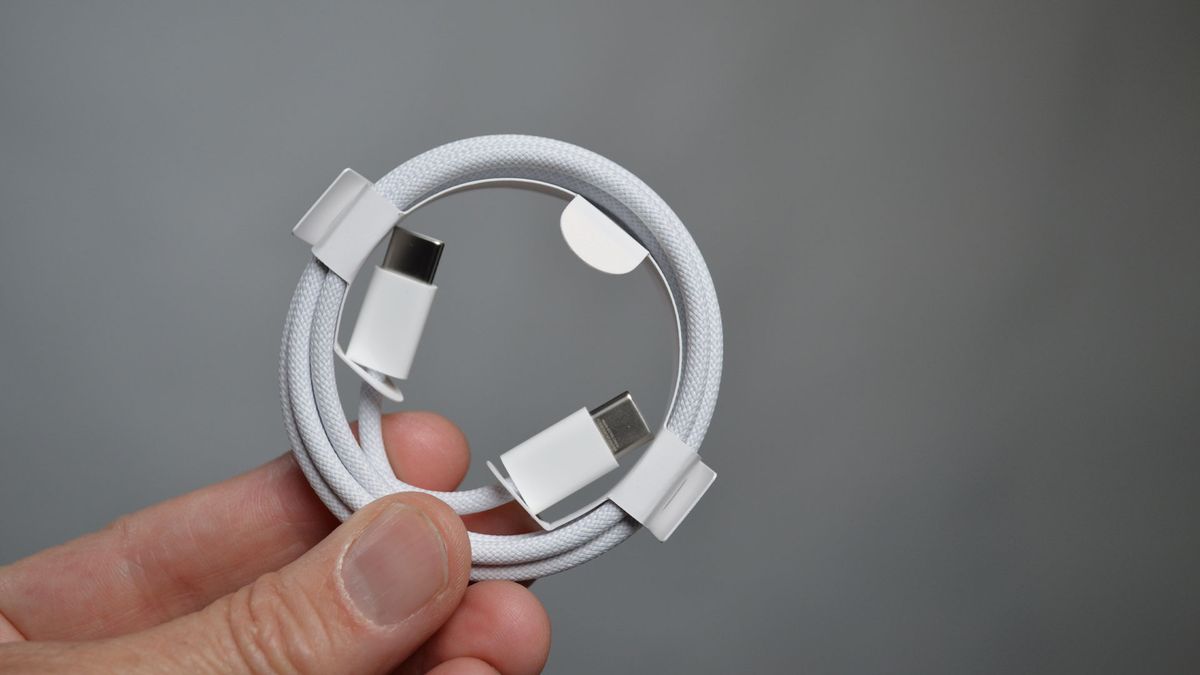
(Image credit: Future / Lance Ulanoff)
The inclusion of a USB-C cable with a woven covering is a positive change for the iPhone 15, offering durability and a premium feel.
It’s worth noting that while the iPhone 15 provides a good battery life of around 15 hours in your tests, if battery life is a top priority, the iPhone 15 Pro or the larger iPhone 15 Plus may be more suitable options with their extended battery capabilities. The A16 Bionic chip, while powerful, might not be as energy-efficient as the A17 Pro found in the Pro models, which could lead to slightly shorter battery life on the standard iPhone 15. Users should consider their usage patterns and priorities when choosing between iPhone models.
- Battery score: 4 / 5
IPHONE 15 REVIEW: VERDICT
The standard iPhone 15 appears to be a notable upgrade over its predecessor and offers features that bring it closer to the flagship models, such as the Dynamic Island, new materials, and a powerful A16 Bionic CPU. The inclusion of a 48MP camera and enhanced portrait processing capabilities is also a significant improvement in photography. While it may not offer every feature of the Pro models, it provides a compelling and more affordable option for those looking for a fresh iPhone model without feeling like they’re missing out on too much.
SHOULD I BUY THE IPHONE 15?
| Attributes | Notes | Rating |
|---|---|---|
| Design | The curved edges and smooth, color-infused glass make this a most modern iPhone | 4 / 5 |
| Display | Losing the notch and gaining the dynamic Island is a net poisitive, as is the lovely and now brighter screen. | 4 / 5 |
| Performance | It’s hard to ask for more than the A16 Bionic, unless you want the A17 Pro, and then you should be looking elsewhere. | 4 / 5 |
| Camera | A nice big main camera leap is paired with some truly impressive computational photography | 4 / 5 |
| Battery | Decent battery life | 4/ 5 |
| Software | iOS 17 is a solid update | 4 / 5 |
| Value | Apple is finally giving you more for you money. | 4 / 5 |
Buy it if…
Don’t buy it if…
Source: Techradar

